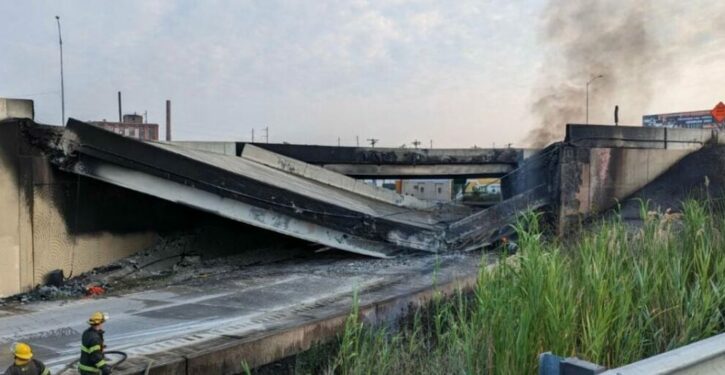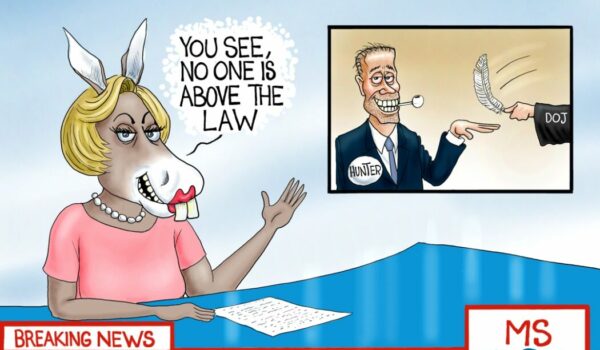
By Daniel Savickas
One of the most lasting images from June is of the utter devastation caused by a tanker truck fire on interstate highway 95 (I-95) in Philadelphia. The fire collapsed the northbound side of a bridge on I-95 near Philadelphia and compromised the integrity of the southbound side such that it is also no longer suitable to handle traffic. Public officials are scrambling to estimate the costs and timeline of repair while travelers are scrambling to find alternatives to this key stretch of the nation’s longest north-to-south highway.
While this fire exposed weaknesses in I-95’s foundations, it also brought to light some shameful and longstanding public policy failures in the United States. Despite infrastructure being a frequent topic of conversation on Capitol Hill, it is often used as a trojan horse to advance other priorities. This neglect has led to highways, bridges, and tunnels across the United States severely lacking in structural integrity.
Late in 2021, lawmakers in Washington passed the much-vaunted “infrastructure bill” into law. The bill totaled over $1 trillion in investment. However, traditional infrastructure only received $127 billion – a little over ten percent – of the bill’s total funding. This is despite President Biden claiming that the passage of the bill meant “America is moving again,” and was in response to “countless speeches and promises, white papers from the experts” about the need to improve the nation’s roads, bridges and other forms of infrastructure.
The bill did include $15 billion for electric vehicle subsidies. This came on top of the billions in tax credits and subsidies the electric vehicle (EV) industry already gets from the government. EVs have not sufficiently caught on in the market and are not being purchased at expected rates. Further, more uptake in the future threatens the sustainability of the electrical grid. Despite these factors, billions went to EVs instead of highways.
The bill also included $85 billion to get the government more involved in areas better left to the private sector. In fact, $20 billion of that total was dedicated for the Department of Energy to invest in energy startups largely at its own discretion. The agency had already failed at a similar venture in the past.
Another $65 billion went toward building high-speed internet and let the government get involved in a traditionally private enterprise. Last week, the Federal Communications Commission (FCC) demonstrated the folly of this by publishing three maps, showing how comprehensively Verizon, AT&T, and T-Mobile cover the nation with high-speed internet.
With all of that cronyism and expansion of government power, Congress could have saved the taxpayers billions of dollars or doubled their investment in traditional infrastructure. That would have gone towards preventing tragedies like the recent one on I-95. However, they chose to feed political pet projects and partisan agenda items instead.
Federal policy has also exacerbated traffic congestion on I-95’s northeast corridor and deprived motorists of alternate routes. The Jones Act – one of America’s most nefarious laws – restricts domestic water commerce to ships that are built, registered, and owned in the United States. This creates very few options for travel between American ports.
In February, the Cato Institute conducted a study, analyzing the Jones Act’s impact on Northeastern traffic. They found the region to be home of six of the ten most congested roads in America and two of the five most congested cities in the world. A large part of this is because of the sheer volume of truckers moving freight on these northeastern highways, and – as any motorist knows – driving more slowly than the average highway traveler.
Shipping between American ports would be more efficient because ships can carry more in single trips. It would also be more environmentally friendly, given the emissions savings that would emerge from the resulting efficiency. However, protectionists and maritime shipping unions have prevented this law from being taken off the books for over a hundred years. We are now seeing the costs more clearly. It has strained the highways and left many without alternatives when disaster occurs.
The tanker truck fire was certainly a freak accident. However, there were a number of ways policymakers could have mitigated the fallout from such an incidence. They could have actually dedicated infrastructure bills to traditional infrastructure and empowered American industry to develop viable contingencies. However, special interests have prevented both from occurring. In the months it will surely take to repair this section of I-95, policymakers should reflect on these mistakes and move to assuage them quickly.
Dan Savickas is director of policy at the Taxpayers Protection Alliance.


